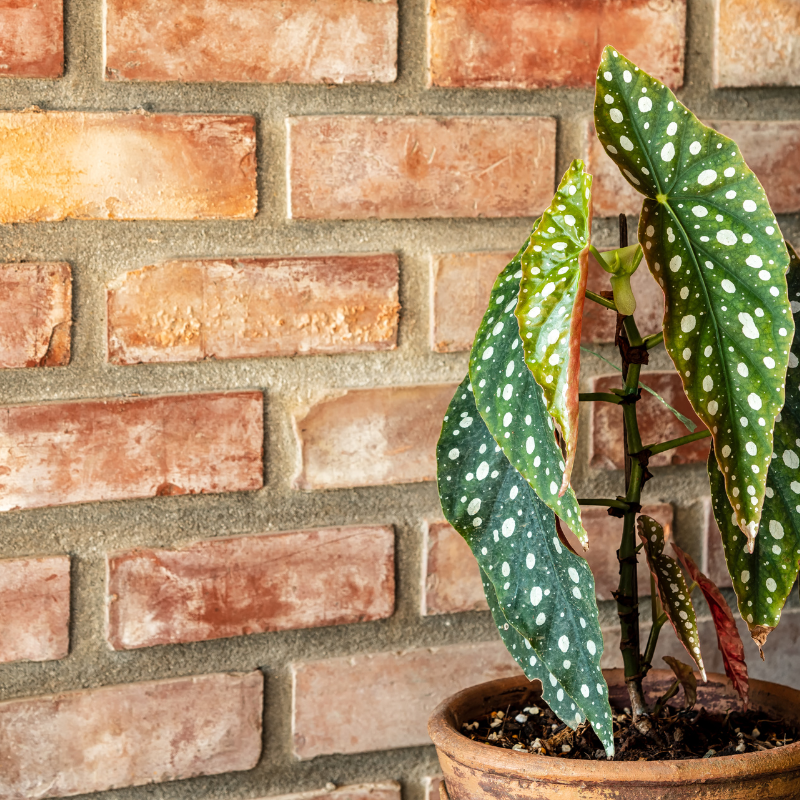- New


From Our Nursery to your doorstep Free Delivery
From Our Nursery to your doorstep Free Delivery
The King Begonia is a beautiful and easy-to-care-for plant, perfect for homes and offices.
he King Begonia is a stunning foliage plant known for its bold, colorful leaves in shades of green, purple, silver, and red. It's a popular houseplant prized for its ornamental value and unique leaf patterns, rather than its flowers. Perfect for adding a tropical flair indoors!
Data sheet
Specific References
1. Light Requirements: King Begonias prefer bright, indirect light. Too much direct sunlight can scorch their leaves, causing damage. If placed in low light conditions, their growth may slow down, and they may lose their vibrant color, but they will still survive.--- 2. Temperature: This plant thrives in temperatures between 65°F to 75°F (18°C to 24°C). It’s important to keep it away from cold drafts, air conditioners, or heating vents as extreme temperatures can stress the plant and stunt its growth.-- 3. Watering: Water the King Begonia when the top of the soil feels dry to the touch. Make sure the soil is evenly moist, but never soggy. Overwatering can cause root rot, so ensure the pot has good drainage. During the winter months, water less frequently as the plant’s growth slows down.-- 4. Humidity: King Begonias enjoy high humidity levels. Ideally, aim for 60-80% humidity. To increase humidity, place the plant in a humid room such as a bathroom or use a humidifier. You can also place the pot on a tray with water and pebbles to create a humid microenvironment around the plant.-- 5. Soil: Use a well-draining, light potting mix such as a blend of peat moss, perlite, and pine bark. Avoid using heavy, water-retentive soil, as this can lead to waterlogged roots and rot.--- 6. Fertilization: Feed your King Begonia with a balanced, water-soluble fertilizer during the growing season (spring and summer), once a month. Reduce fertilization in the fall and winter when the plant is not actively growing.--- 7. Pruning: Prune any dead or damaged leaves to encourage healthy growth and maintain the plant’s appearance. Trim any leggy growth to keep the plant looking neat and bushy.--- 8. Repotting: Repot your King Begonia every 1-2 years or when the plant outgrows its pot. This helps prevent root-bound conditions and promotes healthy growth. Choose a pot that is 1-2 inches larger than the current one to allow room for root expansion.--- 9. Pests and Problems: King Begonias can occasionally attract mealybugs, aphids, or fungus gnats. Keep an eye on your plant and treat any pest infestations with insecticidal soap or neem oil as needed. Be mindful of overwatering, which can lead to root rot and other fungal diseases.--- 10. Toxicity: Toxic to pets. Keep the plant out of reach of cats, dogs, or other pets.
No customer reviews for the moment.